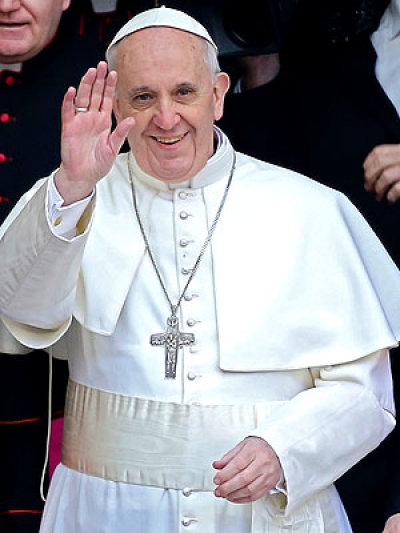How many souls have been shepherded under the Papal staff, and what threads connect these figures across the vast tapestry of Christian history? The papacy, a continuous line stretching back to Saint Peter, has seen 266 individuals occupy the Chair of Saint Peter, each leaving an indelible mark on the spiritual and political landscape of the world.
From the fisherman who first heard the call to the Argentine Cardinal who now guides the faithful, the lineage of the popes presents a fascinating chronicle of faith, power, and transformation. Each pontiff's life, from their birth and education to their conclave and reign, contributes to a complex narrative. The list isn't just a historical record; it’s a mirror reflecting the evolution of the Church itself, reflecting its triumphs, its trials, and its enduring capacity to adapt and endure. The story unfolds through moments of great spiritual achievement and periods shadowed by controversy, all contributing to the intricate story that defines the papacy.
To understand the depth of this historical timeline, consider the following table, which provides a snapshot of Pope Francis, the 266th in this distinguished line. Further information can be found at the official website of the Holy See, Vatican.va.
| Category | Details |
|---|---|
| Full Name | Jorge Mario Bergoglio |
| Date of Birth | December 17, 1936 |
| Place of Birth | Buenos Aires, Argentina |
| Nationality | Argentine |
| Education | Master's Degree in Chemistry; Philosophy and Theology |
| Religious Order | Society of Jesus (Jesuits) |
| Date of Ordination to Priesthood | December 13, 1969 |
| Elevation to Bishop | May 20, 1992 |
| Elevation to Cardinal | February 21, 2001 |
| Election as Pope | March 13, 2013 |
| Papal Name | Francis |
| Predecessor | Benedict XVI |
| Known For | Emphasis on mercy, social justice, and care for the environment; reform of the Vatican Curia; promotion of interreligious dialogue. |
| Current Status | Incumbent |
The roll call of the papacy isn’t simply a list of names and dates; it mirrors the ever-changing landscape of the Catholic Church. The very definition of Pope has shifted and evolved over time. Saint Peter, the first Pope, would not have understood the vast complexities of the modern papacy, which includes the governance of a global institution, a complex diplomatic network, and the care of a faith that spans continents. As the Church expanded, the responsibilities of the papacy grew. The popes navigated the turbulent waters of the Roman Empire, the rise of Christendom, the religious conflicts of the Reformation, and the challenges of the modern world. Through it all, the role of the Pope adapted, and the institution has persevered.
The historical record acknowledges the existence of 266 popes, with Pope Francis holding the distinction of being the most recent in the line. But, the story isn’t without its nuances. There is the case of Stephen II, elected in 752 AD, who died before his formal consecration, leading some lists to include him as Pope, creating the potential for a 267th name. Furthermore, the historical record notes the existence of antipopes, individuals who, at various times, claimed the papacy but were not recognized as legitimate by the Church. These instances highlight the fact that the timeline isn't a simple, uninterrupted flow.
The influence of religious orders on the papacy is also undeniable. Over the centuries, certain orders have produced multiple popes. Benedictines, Augustinians, Franciscans, and Dominicans, among others, have provided leaders. These religious orders brought their particular spiritual emphases and perspectives to the Chair of Peter. Benedictines, known for their focus on monastic life and scholarship, have influenced the Church through their dedication to prayer, study, and service. The Franciscans, with their emphasis on poverty and service to the poor, have helped shape the Church's social teachings and outreach. The diversity of these orders has contributed to the rich tapestry of papal history, ensuring that the leadership of the Church would reflect a broad range of theological and spiritual perspectives.
The papacy's impact extends beyond the spiritual realm, having played a significant role in shaping political landscapes. The Church, often intertwined with political power, has influenced decisions, brokered peace, and at times, engaged in conflict. From the early days of the Church's interaction with the Roman Empire to the later establishment of the Papal States and participation in the affairs of nation-states, the popes have consistently been major figures in international relations. Their decisions have impacted wars, treaties, and the rise and fall of empires. The papacy, therefore, represents a confluence of spiritual authority and worldly power, forever intertwined and influencing the course of history.
The papacy's continuation also necessitates reflecting on the future. As the Church prepares for its next leader, the anticipation and speculation around the selection process and the potential new Pope are enormous. The conclave, the process by which the College of Cardinals elects a new pope, is a complex and historically rich event. The cardinals, representing the global Church, gather in the Sistine Chapel, seeking divine guidance as they make their choice. The decision, guided by prayer and discernment, shapes the Church for years to come. The new Pope will inherit a complex legacy, navigating the challenges of the modern world while upholding the Church’s fundamental teachings and mission.
Looking at the full scope, the legacy of the papacy continues to inspire and intrigue. From Saint Peter to Francis, each Pope has played a critical role in shaping the Church's history, teachings, and global influence. The examination of the papal lineage gives not just a glance at the Church's past, but also provides vital insights into its present and hints at its future. The story of the popes is one of faith, resilience, and transformation, and it will continue to evolve with each new pontiff, each new chapter in the ongoing story of the Catholic Church.



